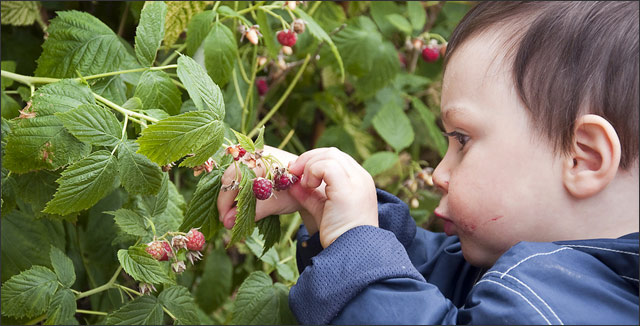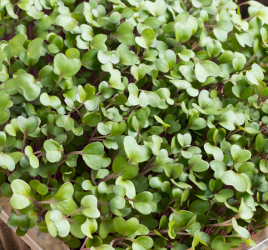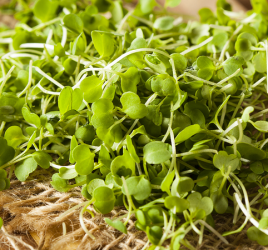Comprehensive Guide on Growing Organic Raspberries

As a child, I remember picking wild raspberries walking around the mountains of Virginia, and plopping them in my mouth as fast as humanly possible. I could not believe that such an amazing fruit was growing wild and free and in abundance.
As an adult, I am shocked at how much raspberries can cost at the supermarket. Because of my love for raspberries, and my desire to keep cost down, when I started my own home garden, I knew that raspberries had to be included. However, I felt intimidated as a new gardener on how to grow them.
What I didn’t know is that raspberries are relatively easy to grow, they are so delicious, and with the right care, will produce fruit for you indefinitely.
With the following incredible tips, you will be growing flourishing organic raspberries right in your own backyard. With their amazing taste, great health benefits, and being pretty resistant to pests, they make an amazing addition that any gardener, even the beginner, can do.
Tips When Planting Raspberries
- When planting a raspberry bush, think about the type of raspberries that you will want. Raspberries do not just come in the color red, but purple too.
- Find a spot in your yard or your garden that allows your raspberry plant space to grow.
- It might make sense to grow your raspberries next to other wild raspberry plants, but it’s actually a better idea to keep them away. This is a great way to prevent diseases and pests that might have already attacked the wild raspberry plant.
- Raspberries are normally known for being cooler climate plants, but with additional varieties that are more adaptable to the warmer climates, they can be grown in most places.
- The best time to plant a raspberry plant is in the spring, or early winter in warmer climates.
- To prepare the area you will be planting your raspberry plant, place organic compost and an organic fertilizer a few weeks before planting.
- When digging the hole for the raspberry plant you want to keep in mind the roots of the plant. You want to make it big enough for the roots to spread out.
- A great tip for preparing the plants is to soak the roots in water for about an hour before placing into the ground.
- Typically you want to place your raspberries plants three feet part in rows of eight feet apart.
- After planting cut the canes about eight to ten inches down.
- Some raspberry plants need to be trellised or planted next to a fence. Other varieties like a raspberry dwarf plant won’t need to be trellised.
Tips for Caring for Organic Raspberries
- One great organic way to help care for your home grown raspberries is to mulch around the roots. This helps to keep the roots moist. Dried leaves make a great organic mulch, and the best part about them is that they will decompose right into your garden adding additional nutrients. Other organic mulch options is to use card board from an old box. This will kelp to keep all the weeds away too.
- When it comes to caring for your raspberry plant, you want to make sure that the roots are getting about one inch a week. One great way to make sure that happens is to install Rootsticks. If you are new to the Rootwell products, you are in for a treat. A Rootstick is the solution for lifelong healthy plants and roots. You can use Rootsticks in any soil, no matter how poor the quality. If you have clay, compact, or fertile soil you can still use Rootsticks. Rootsticks help water and nutrients to get directly to the roots and also helps for oxygen exchange and will encourage deep roots for long term health.
- As your raspberry plant grows you will notice that the roots will send up a large number of shoots called canes. To help to ensure the berry production of your other plants, you can prune those canes, or move them to another spot or even give them to your neighbor.
Tips for Pruning Raspberry Plants
When it comes to pruning your raspberry plants, it depends on the type of plant you have. There are summer bear plants, and there are ever-bearing plants.
- Summer-bearing plants won’t produce fruit on the first year, but on a second year cane, you will notice that the one year canes will grow right beside the second year canes.
- To tell the difference between the one year and two year canes look at the stem. The two year old canes will have a brown stem. Once they have done producing fruit for the season, you can cut those back down.
- Keep about six of your strongest, greenest, and thickest canes.
- For Ever-bearers you won’t need as much care. You can cut them right down to the ground in the fall once you have finished picking the fruit. You won’t even need to prune through the growing season unless you want a more aesthetically pleasing look.
Tips for Harvesting Raspberries
- Expect to see fruit on the second year of a raspberries life.
- Over a time of about 2 weeks you will begin to see the fruit ripen and you should pick the berries every couple of days or so.
- Harvest your raspberries on a dry and sunny day.
- When picking your raspberries you will want to pick the ones that come willingly. If you notice you have to tug on the berry it isn’t ready. Just wait a couple more days and check again.
- If you plan to make a jam or a preserve, you should make it immediately after picking form the plant. If you don’t have time for that, just simply freeze the berries to be used as you need.
Take Away
Raspberries are an amazing addition to your home garden. They are easy to grow and with just a little bit of care, you will have an abundance of raspberries.
Over to You
Do you have raspberries in your garden? What have you found worked the best for them? What is your favorite way to eat raspberries? We would love to hear your thoughts.



